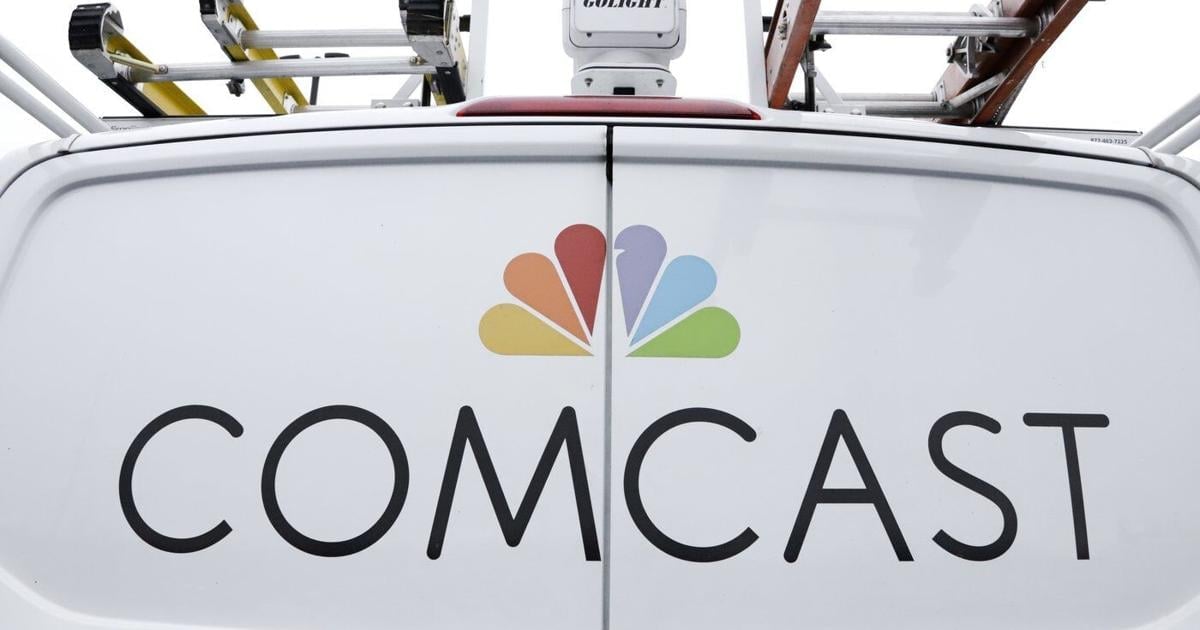WASHINGTON (AP) — Comcast is spinning off into a new company many of the cable television networks that were once at the entertainment giant’s heart as consumers increasingly swap out their cable TV subscriptions for streaming platforms.
Those one-time stars for Comcast’s NBCUniversal cable television networks include USA, Oxygen, E!, SYFY and Golf Channel, as well as CNBC and MSNBC. Movie ticketing platform Fandango and the Rotten Tomatoes movie rating site will also become part of the new company.
Streaming service Peacock will remain with Comcast, as will Bravo, which provides significant content for the Peacock streaming service, and other assets like the NBCUniversal’s studios and theme parks.
Comcast telegraphed the shift last month, before confirming Wednesday that it will spin off assets that generated about $7 billion in revenue over the past 12 months ending Sept. 30. That’s about 5.5% of Comcast’s total revenue during that period, according to the company.
How exactly this split will impact customers is not yet clear. Experts maintain it’s too early to tell, given that Comcast aims to complete the transition over the next year.
Some analysts speculate that the spun-off networks may have more freedom to bring their content elsewhere. That could mean you’ll have more options to find and curate what you want to watch and where — or headaches from juggling several different subscriptions in an already-fractured media landscape.
Wednesday’s announcement arrives as more and more people “cut the cord” on cable, with millions canceling service subscriptions every year — and instead signing up for streaming platforms.
Paul Verna, principal analyst and vice president of content for market research company eMarketer, said Comcast’s decision to divest itself from most of its cable TV channels is a reflection of that trend.
“The writing is on the wall that the cable TV business is a dwindling business,” Verna said. “That’s why Comcast did what it did today.”
Mike Proulx, a vice president and research director of Forrester, added that the spin-off marks “simply a reconciliation of assets that detract from the company’s inevitable all streaming future.”
Comcast expects the new company, which it referred to as “SpinCo” Wednesday, to have the financial flexibility to be “a potential partner and acquirer of other complementary media businesses.” And Mark Lazarus, the current chairman of NBCUniversal Media Group who will serve as the new entity’s CEO, said Wednesday that the standalone company “will be better positioned to serve our audiences and drive shareholder returns.”
Like other cable companies, Comcast in recent years has shifted its business emphasis away from traditional cable toward streaming and other sources of revenue, such as its movie studio, theme parks and home wireless and internet services.
Despite a slightly confusing, glitchy start, Peacock has been one of the company’s biggest success stories, with recent boosts gained in part by the streaming platform’s popularity during the 2024 Paris Olympic Games. In its most recent quarter, Comcast reported that paid Peacock subscribers jumped by 3 million, or 29%, to 36 million subscribers. Peacock’s revenue soared 82% to $1.5 billion in the period.
Dropping “money-losing assets” to instead focus on these kinds of lucrative business is clearly beneficial to Comcast, Verna said — but the future of a new company housing primarily cable networks is less promising. He said he finds it hard “to envision that this company will stay independent for a long time,” predicting future consolidation of the networks or acquisitions through private equity.
Howard Gutman, private equity strategy and coverage lead for MorganFranklin Consulting, also expects consolidation to be in the cards. He noted the spin-off might entice bigger streaming services that are in search of more content, for example, to buy up these kinds of assets.
That could mean watchers of the Golf Channel, for example, finding its content on what were once rival platforms. But the spun-off assets might also find more power to focus on priorities specific to them under a smaller company umbrella, Gutman added. That would potentially open the door for networks like CNBC to further monetize its own content or expand its brand.
“I think it will open up opportunities,” he said, adding that customers will also have more options to curate subscriptions based on what interests them the most.
Verna is less optimistic. He pointed to a history of changes in the media landscape that has repeatedly been tough for consumers.
People already have a hard time figuring out where to watch or stream something they’re looking for, Verna said, and deals to license or spread that out further could worsen that. And paying for more and more services adds up, particularly as platforms have hiked prices over time.
“It’s too early to know what impact (the Comcast spin-offs) will have …. But I wouldn’t hold my breath (on there being) a net benefit to consumers,” Verna said. “Consumers are the ones who are supposed to be driving these trends, and to some extent they are. But they also tend to get the short end of the stick every time.”
The spin-off is targeted for completion in about a year, the entertainment giant said Wednesday, pending financing and approval from its board and government regulators.
Beyond Lazarus’ appointment to CEO of the new company, Anand Kini, the current chief financial officer of NBCUniversal, will take on the same title with the new company as well as the chief operating officer role.
Shares of Comcast, based in Philadelphia, ended up 1.6% Wednesday.
Comcast reported revenue of more than $32 billion and profit of $1.12 per share in its most recent quarter, boosted by the summer box-office success of “Despicable Me 4,” which grossed more than $1 billion worldwide.
___
Grantham-Philips reported from New York.

























